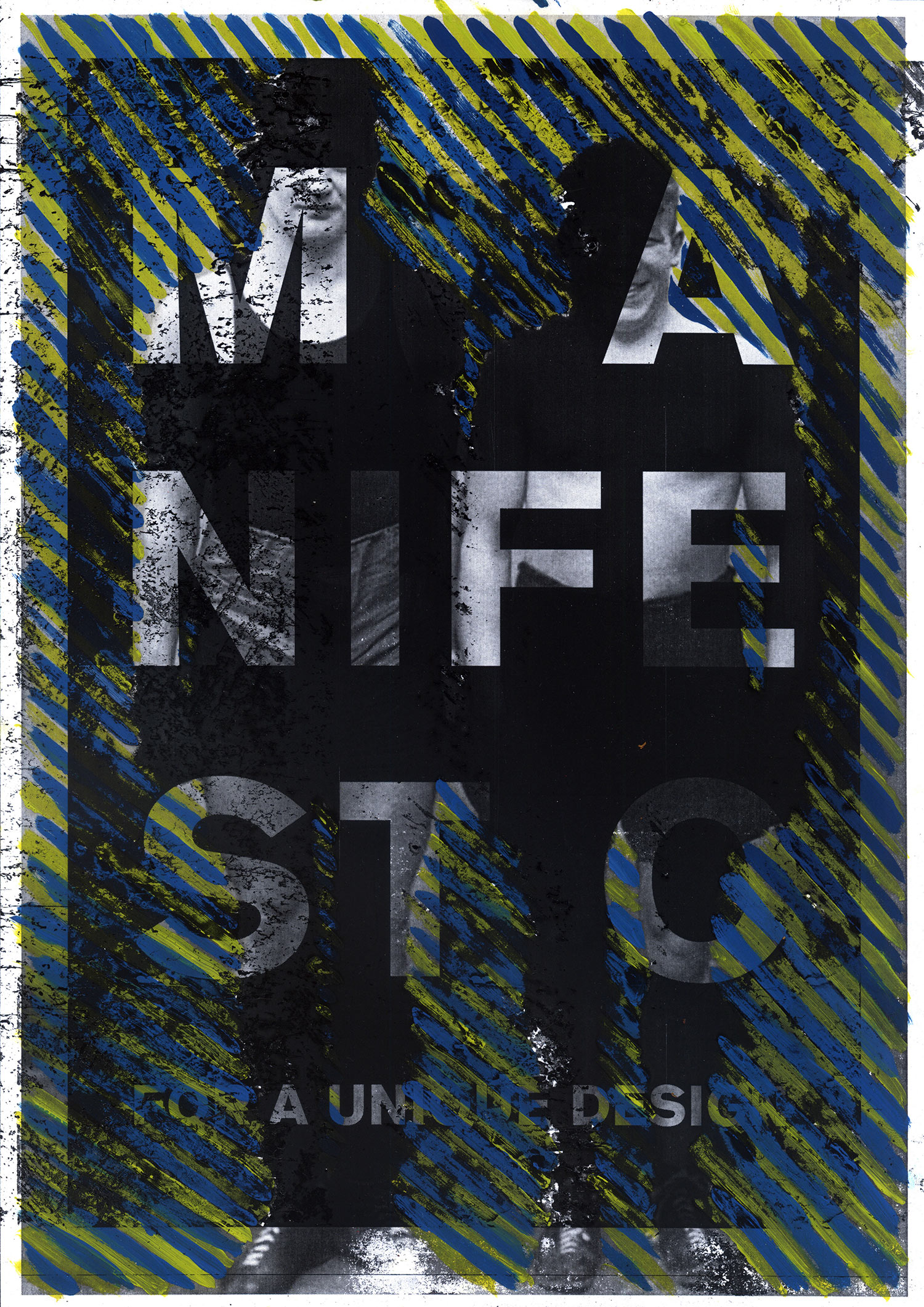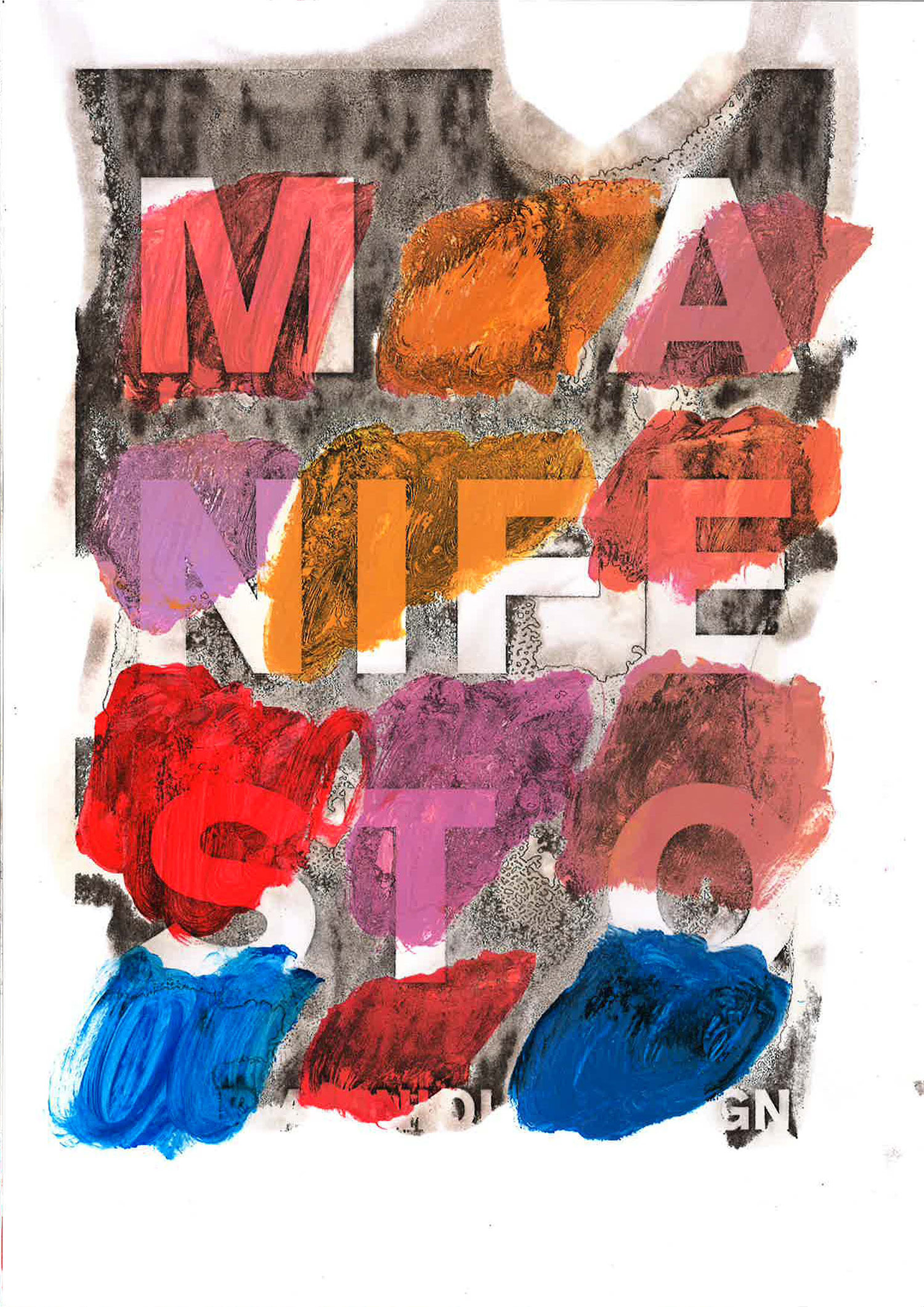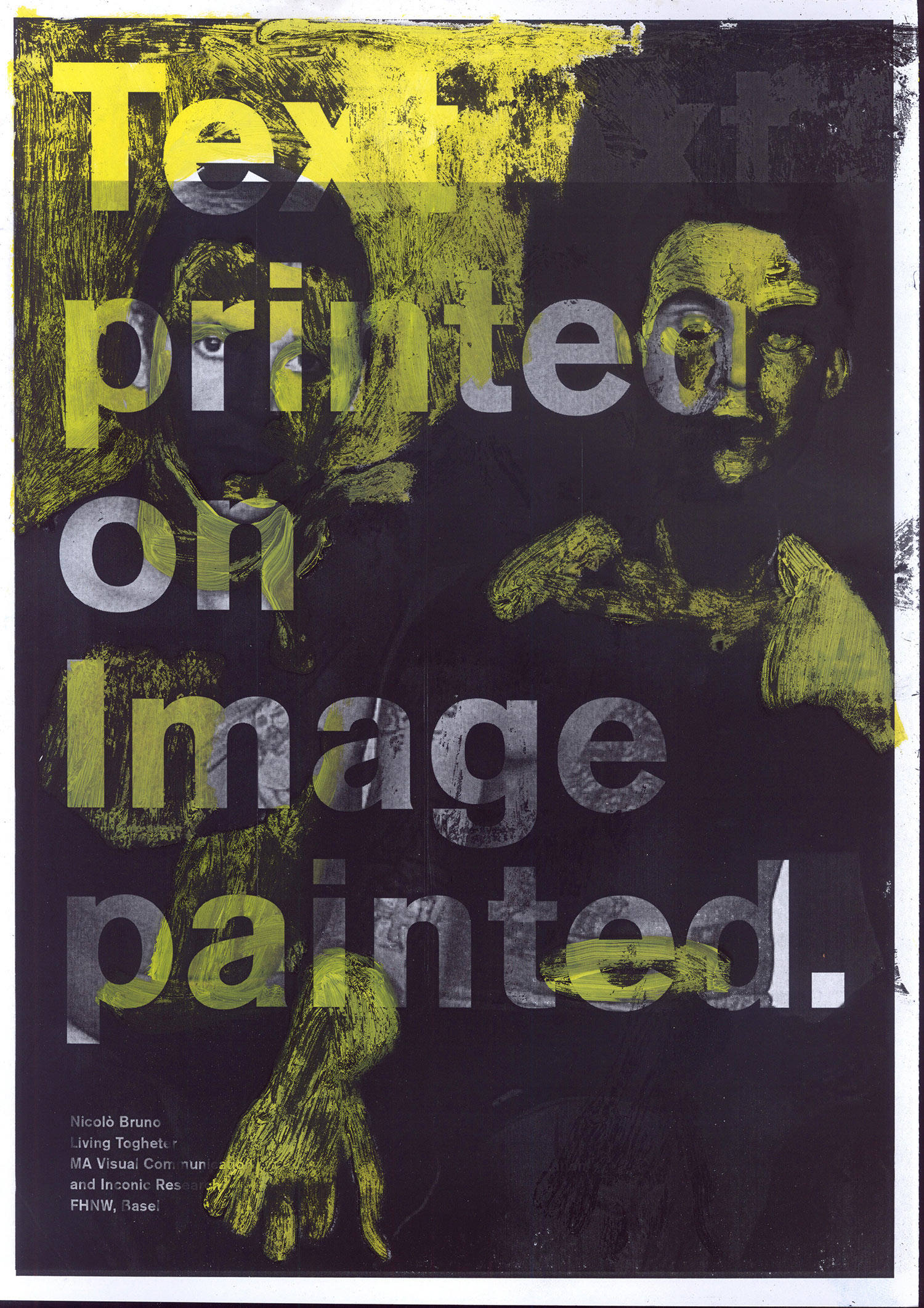Visuelle Kommunikation
Master
Nicolò Bruno
Living Together
“Living Together” (Art & Design) was born because of my need to connect two worlds I belong to, still existing at a distance from each other; the world of graphics and the world of painting.
In this process of looking for a mix between these two realities, I started my journey with a mainly practical approach.
At first, I tried to put together and relate my “know-how” in both areas.
My greatest fascination was to try and find an artistic style of design, a pictorial taste for graphics.
I was looking for a conjunction to link these two planets.
However, after the first steps of this research, I found myself lost in an endless space of possibilities and questions.
I realized that, before finding a way to make design into something “artistic”, I had to begin by defining art and design.
In a flash of awareness, I realized that the boundaries between these two universes are extremely subtle.
It is almost impossible to provide a clear and precise definition of the two concepts of art and design. There is no real language of design, nor strictly of art.
Nor is it through a visual approach that the differences between these two worlds can be established.
Rather, this can be done by delving into the procedural and technical areas instead.
My intention to establish a rapprochement of graphics and painting arose from two assumptions: the difference existing between the processes of art and graphics and the difference existing between unique and serial production.
On the one hand, the graphic process differs from the painting one because of its basic functionality.
Starting this Master degree, the first question I found myself confronted with while I was showing some ideas for a posters project was “why”.
Why?
This question was completely unexpected; it was a question that never came up in either painting or the visual arts.
Later, I learned that the planning procedure and a claim for functionality were the starting points of the graphic production process.
In fact, before you do anything at all, you ponder why and how you are going do it.
At this point, I had the feeling that somehow to paint was a tool to generate questions, while graphics was a tool to provide answers.
Based on this first assumption, I tried to release my mind from the constraints of finding reasons for what I was doing. I tried to work unfettered by any delimiting requirements.
Next, I decided to develop a new process, creating a dialogue …between painting and graphics.
And I decided to analyse the concepts of series and uniqueness in-depth.
Painting is a tool, which mainly allows the creation of unique, one-of-a-kind works.
Within the concept of graphics, the final product involves mass-produced printing.
Following these two premises, my thesis tries to abandon the idea of functionalism in graphics, working without worrying about the question of “why am I doing this?” by answering “why not?”.
Thus I focused, without further questioning, on producing works that are “unique” in their own way (like paintings) but still maintain the character of a series (like graphic designs).
Nicolò Bruno
www.collettivof84.com
Institut Visuelle Kommunikation, FHNW HGK, Freilager-Platz 1, CH-4023 Basel
+41 61 228 41 11, info.vis_com.hgk@fhnw.ch, www.fhnw.ch/hgk/ivk






